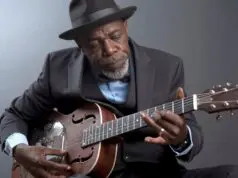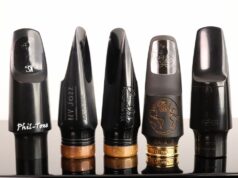
Since signing to Hospital Records back in 2012, Metrik finally arrives with his long-awaited debut album ‘Universal Language’. Having already built a reputation as one of the hottest stars in Drum & Bass, he delivers an eclectic blend of anthemic and euphoric tracks to showcase his musically expansive sound.
For the album, Metrik chose to team up with high quality vocalists and producers like Elisabeth Troy, Jan Burton, Kyza, Rocky Nti, ShockOne and Reija Lee (ShockOne\’s sister). Using all that time to produce his album has definitively payed off, as it is a real pleasure to listen to all of those tracks back-to-back. Personal favorites include \’Universal Language\’, \’Slipstream\’, \’Starchaser (feat. Rocky Nti)\’, \’Resonate (feat. ShockOne)\’ and \’What\’s Out There?\’.
I spoke with Metrik about working with ShockOne, his favorite track to play live and his remix of \’Flashlight\’.
You signed to Hospital Records in October 2012. When you look back, what has been the most memorable experience since then?
Launching my album at Brixton Academy. Hospital has it’s flagship night at one of the UK’s most iconic venues – it was such a big privilege to play there and showcase my album to 6000 people. It really was a spine tingling moment and I felt a huge sense of accomplishment. Sharing that experience with so many people and seeing the connection was just amazing. It was quite surreal to think 5 years ago I was making music in my bedroom and now playing at such a big venue. Still taking it in!
I\’m curious on how the track with ShockOne (Resonate) came about?
Karl and I have been working together for years. We work very well together in the studio as we both have similar tastes and mindsets when it comes to music. He’s been living in London for the last couple of years and following a chat at a festival we were playing at in Perth on new years eve, we decided to lock down a session and work on a track for my album. We spent a solid week working on Resonate, lots of early mornings and late nights. We both wanted to break away from the traditional formulas of d’n’b and spent most of the time jamming on instruments and experimenting with sound design. The idea behind the track was to incorporate vibes of the Beatles and Chemical Brothers whilst thematically exploring the idea of lucid dreaming, inspired by the film Waking Life. It was important for me to have as an authentic cinematic sound to the album as possible, so every spoken word was recorded by established voice actors, in this case I wrote the vocal and got in Tom Clarke-Hill to record it. This track is actually one of the most technically intricate on the album with many background details and elaborate automation. We wanted to create an epic progressive journey that just builds and builds and I think in that respect the track was really successful and one which I’m very proud of.
Following you on Facebook I learnt that the mixing process of your album took quite some time. Could you walk us trough the basics of the process?
Generally I mix my tracks as I write them. As so much of the sound of drum & bass is intrinsic to the aesthetic of the sounds used, I feel it’s quite important to keep a check on these things as you go along. Providing you pay close attention to the individual sounds from the start, mixing the track from ground up becomes much easier without the need to go back and unravel discrepancies from earlier in the session. It was very important for my album to sound as sonically good as possible so I made sure I tested it in many different environments. I also had the advantage of being next door to a world-class mixing / mastering suite (Wired Masters) so taking the album there and listening on the floor to ceiling PMC’s and getting a second opinion from engineer Kevin Grainger was a great help. When you have listened to a body of work for 18 months straight, it’s important to remain as objective as possible and a different perspective can help with that.
Where did the idea to release your single \’Human Again\’ on futuristic orange vinyl come from?
Hospital are always looking at innovative ways to design their products and I was very fortunate to have two amazing individuals involved in the design of the album. Having a background in graphic design myself, it really helped having the album concept in mind at the beginning. All of the album shots were taken when I visited Tokyo earlier this year to play at Womb Club. I travelled the city capturing various different locations with a photographer named Yusaku Aoki. We got the album cover shot as the sun was rising at 5am from the 51st floor of the Park Hyatt (where Lost In Translation was filmed). Ricky Trickartt came up with the brilliant idea of using ‘Esperanto’ which is an international auxiliary language (known as the universal language). The symbols on the artwork are a form of Esperanto so they give the concept an extra synergy. The colours of the photo used for Human Again were predominantly teal, the secondary being orange. Many modern films are graded in teal and orange, so using this colour combination made perfect sense as it tied in with the cinematic feel of the album.
You performed at major events across the globe this year. Which of your new album tracks did you like playing out most and why?
Universal Language was a track I wrote as the album intro. I’ve been opening my sets with it recently and also for the album tour. It’s the perfect introduction track as it has impactive and euphoric moments, combined with a heavy drop. I wanted to create a wall of sound so the chords that first come in are a combination of about 10 different synth and guitar layers. I came across the perfect sample “music is my weapon, music is the universal language” which sets up the mood for what is to follow. I’ve had some really euphoric moments playing out Believe, Slipstream and of course Freefall which is a big moment wherever I play it. It made complete sense to include Freefall as part of the album as it’s the track which perfectly sums up the Metrik sound.
Besides working on your album, you were also on remix duty for DJ Fresh\’s upcoming single \’Flashlight\’. How did you decide in what direction you wanted to take the track and what is your general approach when starting on a new remix?
With remixes I generally think to myself, how would I approach this if it was my own track? In the case of Flashlight, Fresh had already created some amazing parts and vocal hooks from Ellie Goulding. The vocal was very distinctive and he had framed it in an uplifting, pop arrangement. My idea was to take the track and place it in a different context, going for a more Vangelis-inspired futuristic soundscape and a hard hitting drop. There was potential to create an impactive moment by moving the chorus forward framing it with the big chords and then taking it down a slightly darker route for the drop. I love the contrast of light and dark and I think this remix is probably a good example of that. I had fun with making the sounds on the drop as big as possible with layering on loads of processing to get the main lead sound to really stand out in the mix. I also incorporated a few of the drum sounds from Universal Language so the aesthetic of the track adopted my own signature sound, which I also feel is very important with a remix.
Thanks to everybody who is supporting my music and I look forward to visiting The States very soon!
\’Universal Language\’ is out now on iTunes.









